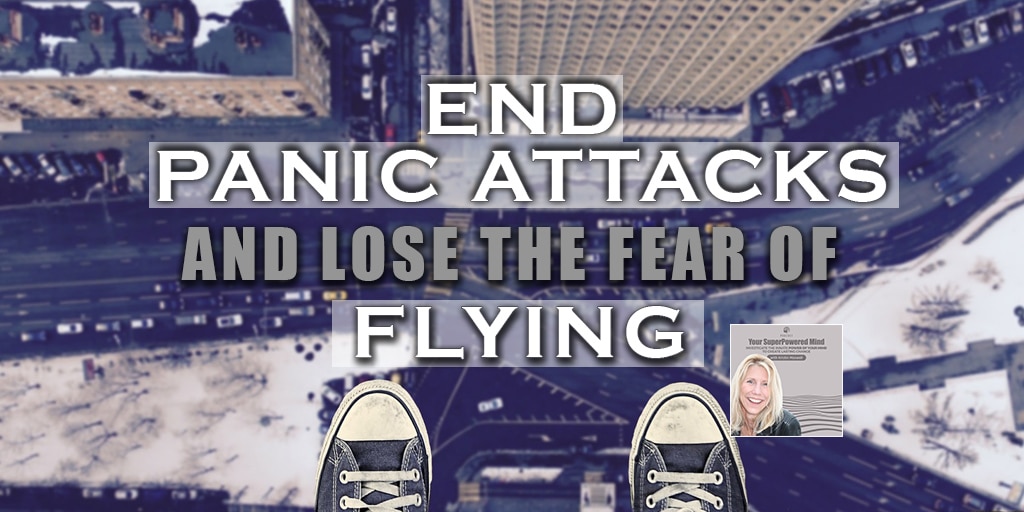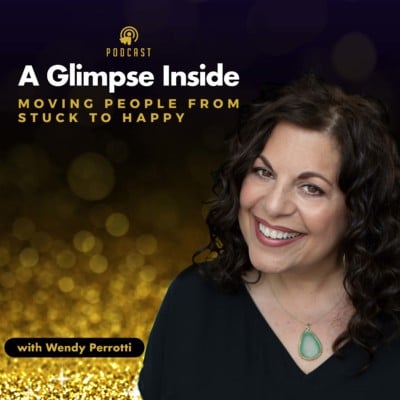
Hi everyone. Welcome to Your SuperPowered Mind. I’m your host Kristin Maxwell, and in this show, we explore the process of transformation and give you tools and strategies that you can use to transform your own life.
Today, we are going to be talking to Captain Tom Bunn about how to end panic attacks and lose the fear of flying.
Tom Bunn is a licensed clinical social worker is the author of Panic Free: The 10-Day Program to End Panic, Anxiety, and Claustrophobia. The book is the result of his many years addressing flight panic in his role as an airline pilot. He is also a licensed therapist, regular contributor to Psychology Today, and a former US Air Force captain who flew the Air Force’s first supersonic jet fighter, the F100. That’s quite a past, quite a story.
Tom, welcome to Your SuperPowered Mind.
Thank you very much, Kristin.
Thanks. It’s not often that I have talk to people who have such a wide variety of backgrounds.
Yeah, I feel like I’ve had several lifetimes already.
Yeah, definitely not boring. My first question is always: What superpower did you uncover as the result of mastering your mind?
Well, the superpower is something that we all potentially have. We have what’s called the autonomic nervous system. It tells you that it should work automatically. It’s got two parts: One that revs us up and one that calms us down.
The easy way to think about this is your car. You’ve got an accelerator pedal and you’ve got a brake pedal. It seems that almost everything that you hear about regulating yourself is about not getting revved up. It’s like, “Do we have a brake pedal?” Well, we were supposed to. We have the computer for it, but we may lack the software.
Almost half of us don’t have an ability to automatically calm down, and so, that leaves us in a position where we have to manage not getting revved up. I mean, literally, if you had a car and you knew the brakes weren’t very good, you couldn’t go very fast in it, you’d be very limited in what you can do with the car. You’d be very careful about hitting the accelerator pedal because you wouldn’t be able to slow down.
This work is all about, “Wait a minute, what happened to the brake pedal? How are we going to get that to operate?” What I found years ago was that when people linked being on the airplane to getting engaged or marriage vows, that helped calm them, I didn’t know why.
A researcher, Stephen Porges, discovered that the parasympathetic nervous system is activated by signals that we humans pass unconsciously between each other. When wedding vows are taking place or engagement is taking place, that’s a moment when we’re accepting the other person completely. What he’s found is that when we’re with other people in a social situation, ordinarily, we’re picking up signals that we’re physically safe, but we may not be picking up signals that we are emotionally safe. People are judging us, criticizing us, checking us out.

You’re with a person who’s physically safe and they’re psychologically safe, that activates your calming system.
Dogs sniff each other out with their noses when they meet each other, you see them, they decide whether they’re going to be interested or fight or play or mate. What we do is we sniff each other out without even knowing that we’re doing it and the signals that we pick up unconsciously. According to Steve Porges, if they’re benign, they calm us down by activating the parasympathetic nervous system. It’s not totally on or off, it can be gradual. We can get us a signal that we’re physically safe, but when we don’t get the signal that we are emotionally safe, we’re still somewhat on guard. What we’re looking for now that he’s made it clear why engagement and wedding vows were so helpful. Now we’re saying that, well, it doesn’t have to be something that dramatic. It can be anytime you’re with a person who is not judgmental with you, because I’m assuming, they’re physically safe. You’re with a person who’s physically safe and they’re psychologically safe, that activates your calming system.
Now, what we can do is just see if you can find a person in your life who is not judgmental with you. I’ve had a few clients say, I don’t know if I can find somebody like that, hopefully most of us do. In fact, if you have the maximum version of it, you have a person who sometimes when you’re with them you feel your guard let down. Once we identify a person who has that calming effect on you, now we know how to push the brake pedal. Now we say, “Okay, where do we want to push the brake pedal? Is it going to be taking an MRI, crossing a bridge, being in an elevator or on an airplane?” Then we can apply it in those situations.
Okay. Wow, you’ve just said a lot there. Let me go back and I love the analogy of the brake and the car and getting it to go. You’ve discovered that people can calm themselves down when they have a memory of somebody who is calming.
Yes. There was some research done at the University of Arizona just this year that made it very clear. They took 102 people, all of them committed in romantic relationships. They tried three different calming interventions or potentially calming interventions.
The first one, they put them under a stressful situation with monitoring devices and distract yourself by thinking about what you did earlier today. Then they checked the results with that distraction intervention.
The second group, one by one they said, while you’re in this stressful situation, think about your romantic partner. They checked to see what response that got.
The third group, they said, “Oh, guess what? Here’s your romantic partner just walked in.” You guys sit together while you’re in this stressful situation. Of course, you know, that was very helpful. The thing that was amazing in the research, the people who simply thought about their significant other had just as much benefit as having the person physically present.
Wow.
That kind of answers the question. We can use a memory of being with another person and that will activate our calming system.
Let me ask, and I know the answer to this question because I’ve read your book, but let’s say I’m on a plane and I’m panicking. Am I able to just think about, because I have to say, I used to have a really big phobia of flying. I don’t any longer, but would I be able to just think of a calming situation and calm down.
That’s kind of a day late and a dollar short.
Exactly. Right.
What you need to do is before you get on the plane, you need to establish links in what’s called unconscious procedural memory. That’s a part of the brain that’s not troubled by stress hormones. It’s in the subcortex. Cortex, when you get stressed, it doesn’t work very well. We can get overloaded. That’s what happens in panic so you really can’t do anything to help yourself at all.
Before you even get on the plane, actually days before, you want to train your mind to unconsciously take care of you. Let’s say you think about your friend who’s calming to be with and they have a photograph of the plane taking off by their face. Well, their safety signal is coming from their face. There’s a picture of the plane taking off. Those things get associated.
The second place Porges found is that there are signals coming from the other person in addition to their face, the quality of their voice.
You imagine the two of you hold a corner of the picture, each talk about the plane taking off in the picture and doesn’t matter what you say, it’s the quality of your friend’s voice. That’s where the safety signals are. They’re getting connected to the takeoff. Then while you’re having that conversation, you notice your friend just put their arm around your waist and giving you an affectionate hug. That’s the third thing, face, voice and touch. The three things that activate the calming system. You connected them to the takeoff. Then you want to connect to turbulence and landing and even just getting on the plane and all the things you could think could go wrong. You want to link to the things that happen if you start to panic. If you start to panic, it stops right there.
Wow. Okay. I want to go through and unpack a little bit more of what you said, but before we do that, we do need to go to a break. Where can people learn more about you in this process and your books?
Well, we have two websites. One is easy to remember, fearofflying.com. There’s a lot of free stuff there and also courses. The book is Soar: The Breakthrough Treatment For Fear Of Flying. That’s on Amazon as well as other places. Then for panic, the book is Panic Free: The 10-Day Program to End Panic, Anxiety, and Claustrophobia. For that I have a website, panicfree.net.
Great. We are going to take a quick break and when we come back, we’re going to talk more to Tom Bunn about how to end panic attacks and lose the fear of flying.
To listen to the entire show click on the player above or go to the SuperPower Up! podcast on iTunes.
Podcast: Play in new window








